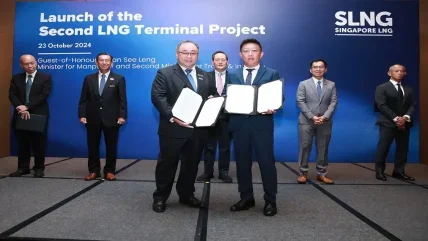
Wood has secured the front-end engineering design (FEED) contract for Singapore’s Second liquefied natural gas (LNG) Terminal, awarded by Singapore LNG (SLNG).
The contract involves Wood’s subsidiary defining the onshore connecting infrastructure scope, providing the engineering design and detailed works needed for the upcoming engineering, procurement and construction (EPC) contract for the terminal’s construction.
The FEED phase is scheduled for completion around mid-2025, after which SLNG will commence the Request for Proposal process for the EPC contract. The Second LNG Terminal is projected to become operational by the end of 2030.
The development will include a floating storage and regasification unit (FSRU), a specialised vessel for LNG, which will be Singapore’s first permanently deployed FSRU.
The terminal will have facilities for the transfer of regasified LNG from the vessel to the onshore gas transmission system. Wood’s role will include reviewing the FSRU’s design and overseeing its integration with the onshore infrastructure.
The project will engage over 50 Wood employees based in Singapore, with additional support from experts in Ireland and Scotland working on marine infrastructure design, and specialists in Spain contributing to the FSRU design.
In addition, SLNG has entered into an agreement with a subsidiary of MOL to charter the newbuild FSRU, which will have a storage capacity of 200,000m3 and a regasification capacity of five million tonnes per annum (MTPA).
South Korean shipbuilder Hanwha Ocean will construct the FSRU.
Alongside the existing SLNG Terminal on Jurong Island, the new FSRU will increase SLNG’s total LNG throughput capacity to up to 15MTPA, providing flexibility to meet Singapore’s future gas demands.
As part of its agreement with Jurong Port, SLNG will develop the Second LNG Terminal at Jurong Port, where the FSRU will be stationed. The necessary onshore connecting infrastructure will be constructed to link the FSRU to the existing pipelines and the broader Singapore gas network.
Wood process and chemicals Asia Pacific senior vice president Henry Ling said: “Wood successfully supported SLNG with the engineering of the first LNG Terminal which was completed in 2013. We will deliver the same exceptional quality of work for this complex concept, utilising our expertise in LNG terminal design and regasification.
“Combining our marine infrastructure design and experience with Singapore’s regulatory approvals will bring this low-carbon concept to reality.”






